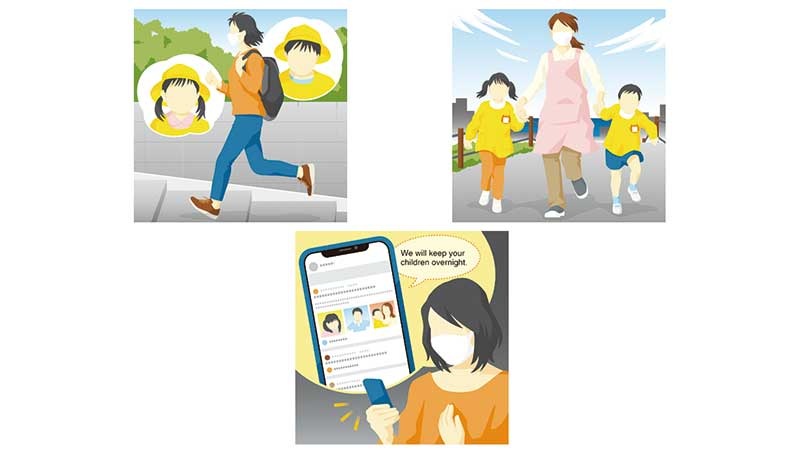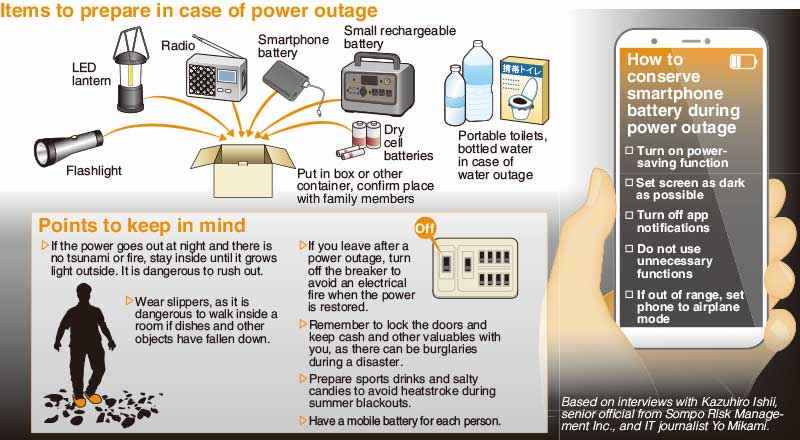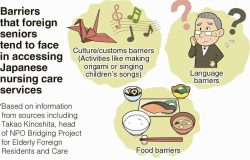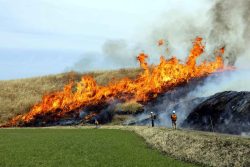Disaster Preparedness / Post-Quake Congestion Could Cause Secondary Disasters; Crowds, Loss of Phone Signal Issues to be Aware of
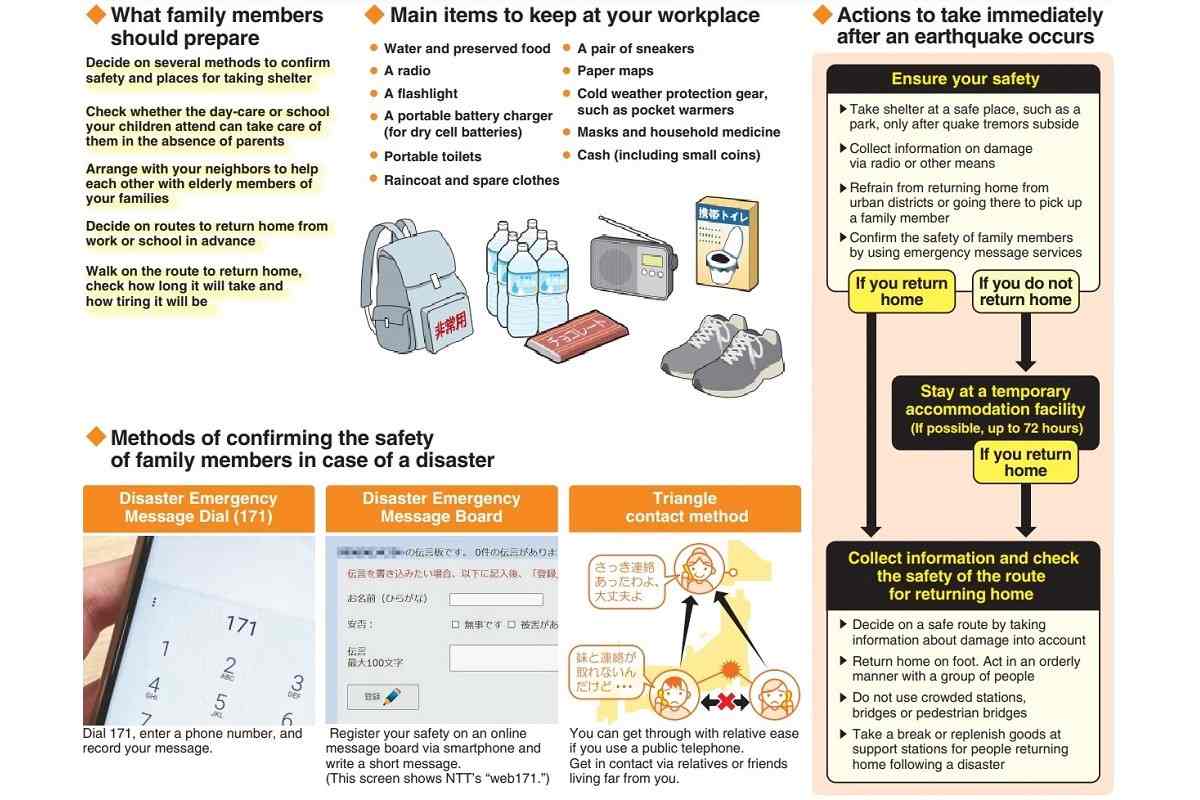
Prepare for any difficulty in returning home in case of a major quake
13:02 JST, December 25, 2023
If there is strong earthquake in the middle of a weekday, urban areas will be full of a huge number of people who cannot or will find it difficult to return home.
If people begin heading for home en masse, roads and sidewalks will become congested, and there is a risk that people may be involved in secondary disasters such as a crowd crush.
The following is a fictitious scenario of a family and about what actions need to be taken what needs to be avoided.
***
Strong tremors during a weekday afternoon
Taro, 35, his wife Hanako, 34, and their son Ichiro, 4, live together as a family. Both Taro and Hanako have jobs.
Taro commutes to his workplace at a company in Tokyo from his home in a neighboring prefecture. His commute is about an hour by train.
On a weekday afternoon, the company’s office inside a multitenant building was hit by strong tremors.
Taro’s boss shouted, “Let’s evacuate.” After the tremors ceased, Taro came to himself.
Windows were broken in some places and the pieces were scattered on the floor. To prepare for aftershocks, Taro and his colleagues walked to a nearby park.
Taro wondered, “Are my family members safe?”
Though Taro made phone calls to Hanako, who worked at home, he could get in contact with her. Taro was also worried about Ichiro, who attended a daycare center.
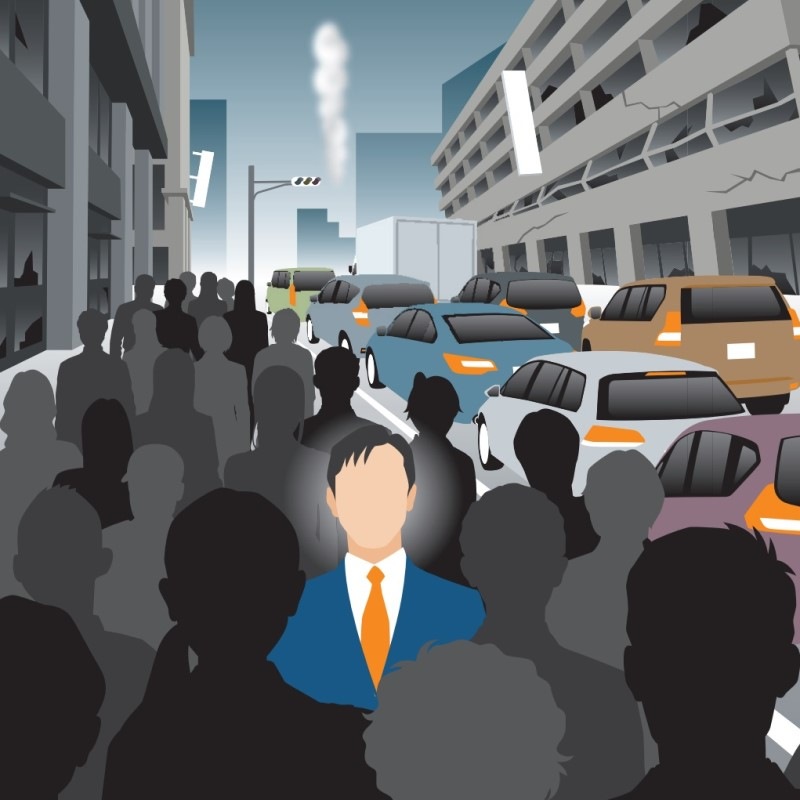
Can’t reach train station
Taro and his colleagues were told that they would not be allowed to enter the building where the company is located, until safety could be confirmed. Taro thought, “It will be all right as I have a smartphone,” and decided to head for home.
Taro tried to check the status of rail services with his smartphone, but it was disconnected. To search for any information, Taro headed for a nearby station.
As Taro got closer to the station, more and more people crowded the sidewalks. Soon, Taro became unable to move forward.
Nearby roads were also congested with cars. Taro tried to distance himself from the station, but he was unable to move in any direction due to the crowds.
When he happened to look up, he saw smoke billowing in the distance. He trembled thinking, “If a fire occurs nearby, I won’t be able to escape.”
Stay in temporary shelter
Taro just barely managed to escape the crowds. However, roads and bridges were closed to traffic all over, so Taro could not return home.
Several hours after the earthquake, Taro’s smartphone suddenly rang. It was a call from Hanako.
She told him, “We are all right. I went to the daycare center to pick up Ichiro and now we are together.” The words filled Taro with relief.
It began to get dark around Taro. The Tokyo metropolitan government’s website came back online and Taro was able to reach an elementary school building, which was operating as a temporary shelter, and stay there.
While resting, Taro reflected on his actions. He thought, “I should not have acted without clear intentions, and I should have secured a method to contact my family in the event of a disaster.”
People stranded by a big quake in Tokyo likely to disrupt emergency activities
On the day the Great East Japan Earthquake struck in 2011, almost all the trains and subways in the capital stopped running, leaving approximately 5.15 million people in the metropolitan area unable to return home. It was primarily because so many people from neighboring prefectures came to Tokyo every day to work or to study.
According to a national census taken in 2020, the ratio of daytime population to nighttime population was 119.2% in Tokyo and 104.4% in Osaka, showing a high ratio in urban areas. An estimate made by the Tokyo Metropolitan Government (TMG) shows that if an earthquake occurs directly under the capital, approximately 4.53 million people would be stranded, unable to return home.
– Stay at a safe place for 3 days
Should a large-scale earthquake occur during the daytime on a weekday and people start to return home all at once, mass congestion would occur in many areas, says Yu Hiroi, professor of urban disaster mitigation engineering at the University of Tokyo.
For instance, in the Marunouchi district near Tokyo Station, or the areas in front of Shinjuku Station and Shibuya Station, there is a high risk of overcrowding with more than 6 people per square meter.
Mass congestion could result in people tumbling over like dominoes or falling into an avalanche of people. If people on sidewalks overflow into the roadways, the flow of automobiles would also become congested, which could then interfere with emergency, rescue, and firefighting activities.
So, Hiroi said, “It is advisable for people not to start returning home in the wake of a disaster until the confusion subsides.” The national government and the TMG, in their respective guidelines, advise people to “remain at their workplaces, schools or other “facilities to temporarily accommodate people” in the event of a disaster for three days until the chaos subsides. This includes public facilities and private buildings.
– Stockpile food, battery chargers, and the like
“If the safety of family members is confirmed, the number of those who would try to return home immediately after a disaster may decline,” said Takehiko Yamamura, director of the Disaster Prevention System Institute LLC. in Tokyo. It can be a good idea to decide on multiple ways in advance to check on the safety of family members, such as the use of the “Disaster Emergency Message Dial (171).”
Assuming that you will stay at your workplaces or elsewhere for three days or so, you had better stockpile food, portable battery chargers, and other items. Since you can even be struck by a disaster while on the move, you should carry a minimum amount of such supplies in your bag.
If you are hit by a disaster while you are out of your home, you should use a nearby temporary accommodation facility. The TMG estimates that among those who would have difficulty returning home, approximately 660,000 people, including those who are out shopping, would have no place to take shelter temporarily.
Therefore, the metropolitan government is trying to secure more temporary accommodations. As of July this year, the TMG secured 1,239 such facilities in Tokyo, which can accommodate approximately 470,000 people. Locations of temporary accommodation facilities and the “stations to assist people in returning home in time of disasters,” which provide people with water and let them use toilets on their way back home, can be found on local government websites.
However, some of these facilities may not be readily available due to damage, so people are advised to take action only after the information about the launch of their services is issued.
The TMG is developing a system that will show the status of congestion and the availability of temporary accommodation facilities on a map to be drawn based on the GPS (Global Positioning System) information via smartphones and aims to put it into a full-scale operation in fiscal 2024.
***
Each and every person needs to be aware of disaster risks
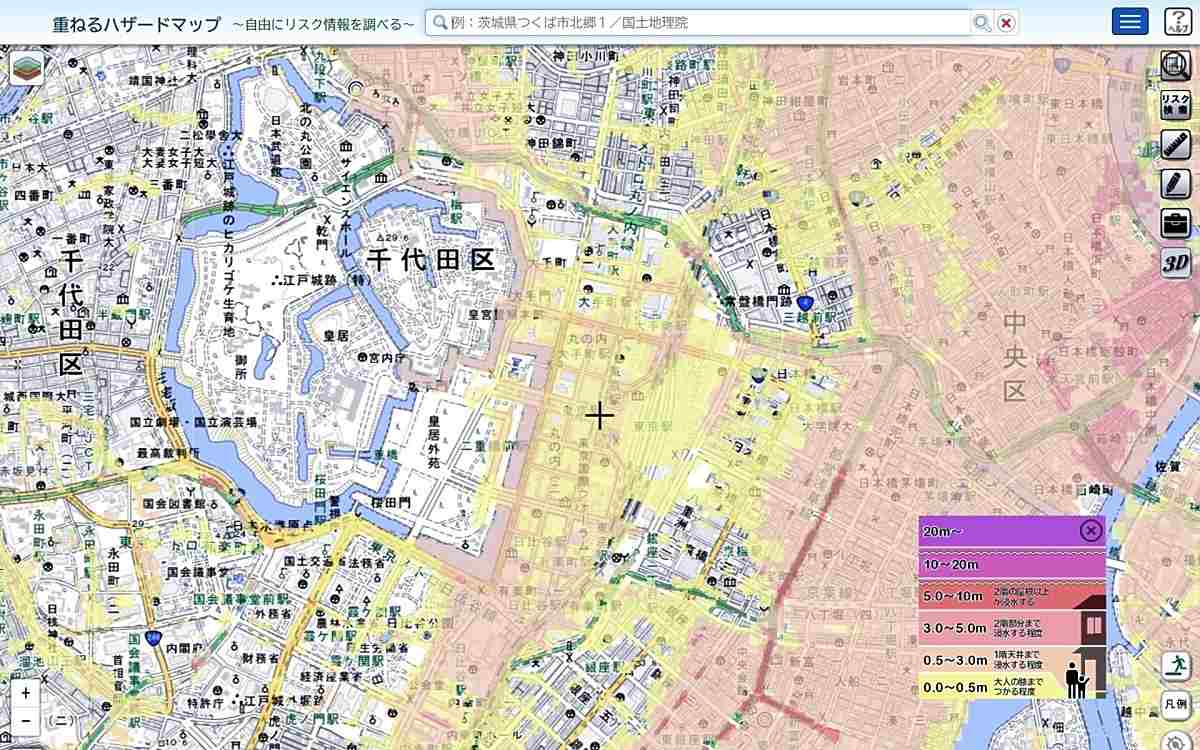
My seven-year-old daughter handed me a card when I returned to my home in Fukuoka City from Tokyo where I was staying for work in summer. The card was to inform the elementary school which she attends of to where our family will evacuate in case of disaster.
I was going to quickly write down the information, but I was taken aback with a sentence on the card, saying, “Do not fill in without careful consideration. Discuss it carefully [with your family members] before doing so.”
I blamed myself for trying to make decisions on my own only because I have some knowledge of disaster prevention because of my job.
In the event of a disaster, means of communication can be shut down. “It is important to discuss regularly with family members and those close to you what you should do in the event of a disaster based on hazard maps and other information,” said Toshitaka Katada, president of the Japan Society for Disaster Information Studies and a specially appointed professor at the University of Tokyo.
However, it seems to be hard to say that even hazard maps are being widely used. According to a survey of about 19,000 people conducted by major map service company Zenrin Co. in summer, less than 40% of respondents said they have learned about disaster risks around their homes through hazard maps. One in three said they had never seen or were unaware of such maps.
Japan is a disaster-prone country, with various natural disasters raging in various regions every year. But why is there no heightened awareness of disaster prevention? Katada said, “People have a vague sense of anxiety, but don’t want to think that a disaster will really happen to them. Or they have a mentality that it will never happen to them.”
“Uniquely in Japan, people also overly rely on administration. People think disaster prevention is something local governments should take care of,” Katada said.
It is essential for each one of us to be aware of disaster risks that lurk in our daily lives on his or her own initiative and to make appropriate preparation. For instance, risk of flooding and landslide can be easily checked on Kasaneru Hazado Mappu hazard map on the website of the Land, Infrastructure, Transport and Tourism Ministry.
“I recommend first you think about how you can protect your loved ones other than yourself,” Katada said. As a reporter in charge of disaster prevention, I also would like to do what I can.
"JN Specialities" POPULAR ARTICLE
-

The Japan News / Weekly Edition (12/12-12/18)
-

English-language Kabuki, Kyogen Entertain Audiences in Tokyo; Portland State University Professor Emeritus, Graduates Perform
-

Noodle Dining Shunsai / Rich Oyster Ramen to Savor at Odasaga; Experienced 68-year-old Owner Creates Numerous Ramen Varieties
-

The Japan News / Weekly Edition (12/5-12/11)
-

People Keep Loved Ones’ Ashes Close in Special Jewelry, Small Urns as Unique Way to Memorialize Them
JN ACCESS RANKING
-

Keidanren Chairman Yoshinobu Tsutsui Visits Kashiwazaki-Kariwa Nuclear Power Plant; Inspects New Emergency Safety System
-

Imports of Rare Earths from China Facing Delays, May Be Caused by Deterioration of Japan-China Relations
-

University of Tokyo Professor Discusses Japanese Economic Security in Interview Ahead of Forum
-

Japan Pulls out of Vietnam Nuclear Project, Complicating Hanoi’s Power Plans
-

Govt Aims to Expand NISA Program Lineup, Abolish Age Restriction

